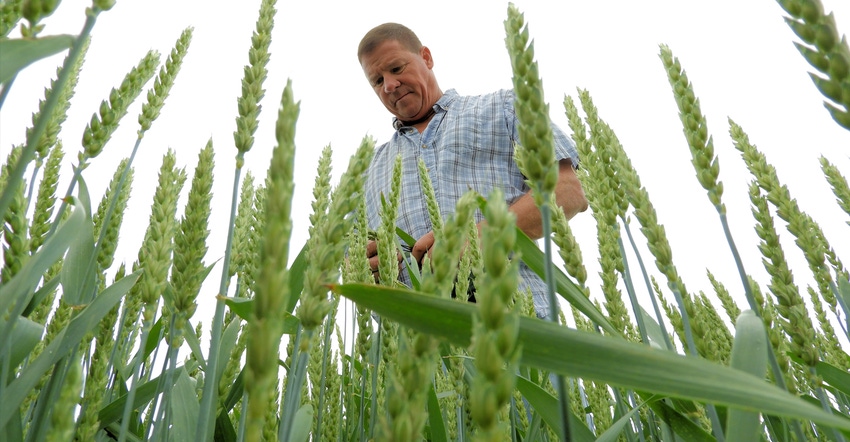
Despite doom and gloom reports surrounding ag commodity tariff and trade threats by China, corn and wheat have been holding or trading higher in recent weeks. Even soybean futures are recovering after April’s retaliatory threat.
As Greg Turner of Preston, Md., recently checked mid-morning prices, he was surprised that wheat futures ticked 18 cents higher. With close to 500 acres of wheat headed for early July harvest, this Eastern Shore grain producer is curious why the markets are showing strength.
Despite the ambiguity of a potential U.S.-China trade agreement and tariffs on soybeans, beef and more, trade risks for U.S. agricultural processors and protein companies are manageable, reports Bill Densmore, senior director of U.S. corporate research for Fitch Ratings, a global credit and research firm.
According to Fitch Ratings, most firms have a well-established and diversified asset base or risk management practices to weather evolving trade policies.
The bigger picture
The U.S. exports over $135 billion of ag products. Soybeans represent more than 15%, and China is a top destination. China’s threat of a 25% tariff back on U.S. soybeans imports initially pressured domestic soybean prices. Then that market immediately began to recover as news of progress toward a settlement emerged.
Fitch Ratings anticipates the impact of recent commodity price volatility, and an eventual trade deal will be a net neutral for Bunge, ADM and Cargill. That’s based on hedged inventory positions and vast global footprints.
Chicken and hog producers Tyson and Smithfield were already subject to a 25% tariff on U.S. pork. But they procure significant soybean meal for animal feed, so input costs likely benefited from the recent selloff in soybeans and live hog prices.
Bunge and ADM generated 78% and 54% of their revenue, respectively, outside of the U.S. in 2017. Only 5% of the aggregate is estimated from China, according to SEC filings and Factset data. At least 50% of Bunge's production and storage capacity is in South America. That enables the company to benefit from increased utilization of its assets in Brazil, which is world's second-largest producer and exporter of soybeans behind the U.S. Ultimately, Brazil and the U.S. still hold the balance of global soybean supplies.
ADM's operations are diversified across commodities, such as oilseeds, corn, wheat, rice and value-added specialty ingredients products. Approximately a third of its processing plants and procurement facilities are in non-U.S. markets.
Privately held Cargill's business encompasses origination and processing of multiple commodities, value-added food ingredients and animal nutrition. That insulates it from volume and price fluctuations caused by changes in demand or supply disruptions of any specific marketplace or product.
China’s hoggish tariff
Remember, China already had a 25% tariff on U.S. pork. That’s one reason President Donald Trump intervened.
Smithfield’s fresh pork exports represented about 25% of the processor’s sales in 2017. Only 25% of that amount went to China.
Exports amounted to only about 10% of Tyson's total sales in 2017. So, pork sent to China and Hong Kong was insignificant.
Fitch Ratings projects the financial impact of China's 25% tariff on U.S. pork that was implemented in April will be less than $100 million annually for Smithfield, assuming exports to China remain constant. With margin-improving initiatives and lower input costs (such as cheaper soybean meal) as an offset, China’s tariff impact is immaterial for Tyson.
According to media reports, China has also allegedly agreed to increase U.S. ag product purchases. That helps explain the bounce-back in the grain markets.
About the Author(s)
You May Also Like




